Happy to see a favourite marque back on shop shelves, the editor tests a hunting goddess
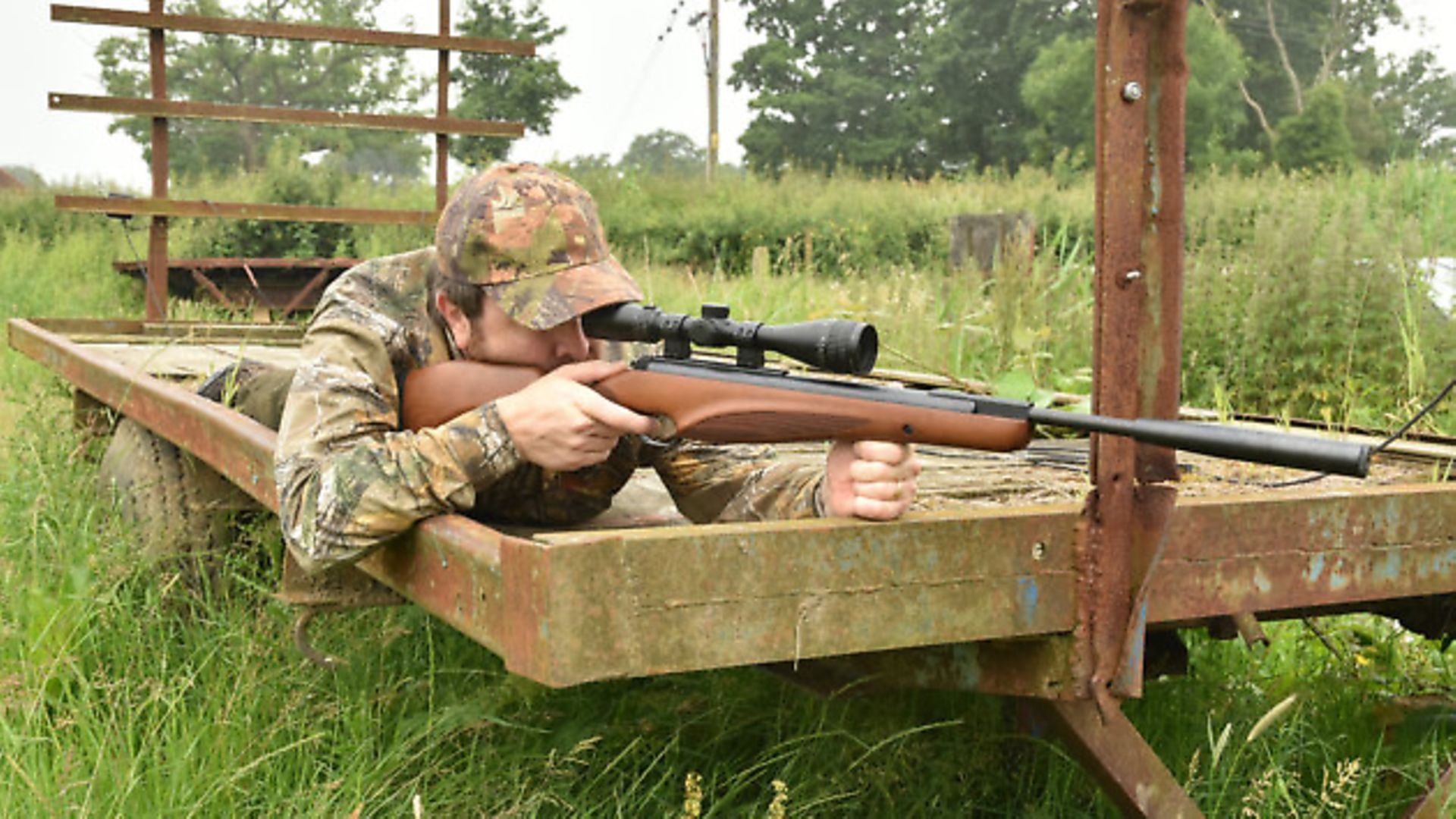 credit: Archant
credit: Archant
Manufacturer: Diana GmbH
Importer: Edgar Brothers
Model: 340 N-TEC
Type / Power: Break-barrel / Gas-ram
Length / Weight: 42” / 8.4lbs
Calibres: .177, .22
Trigger: Two-stage adjustable
RRP: £299.99
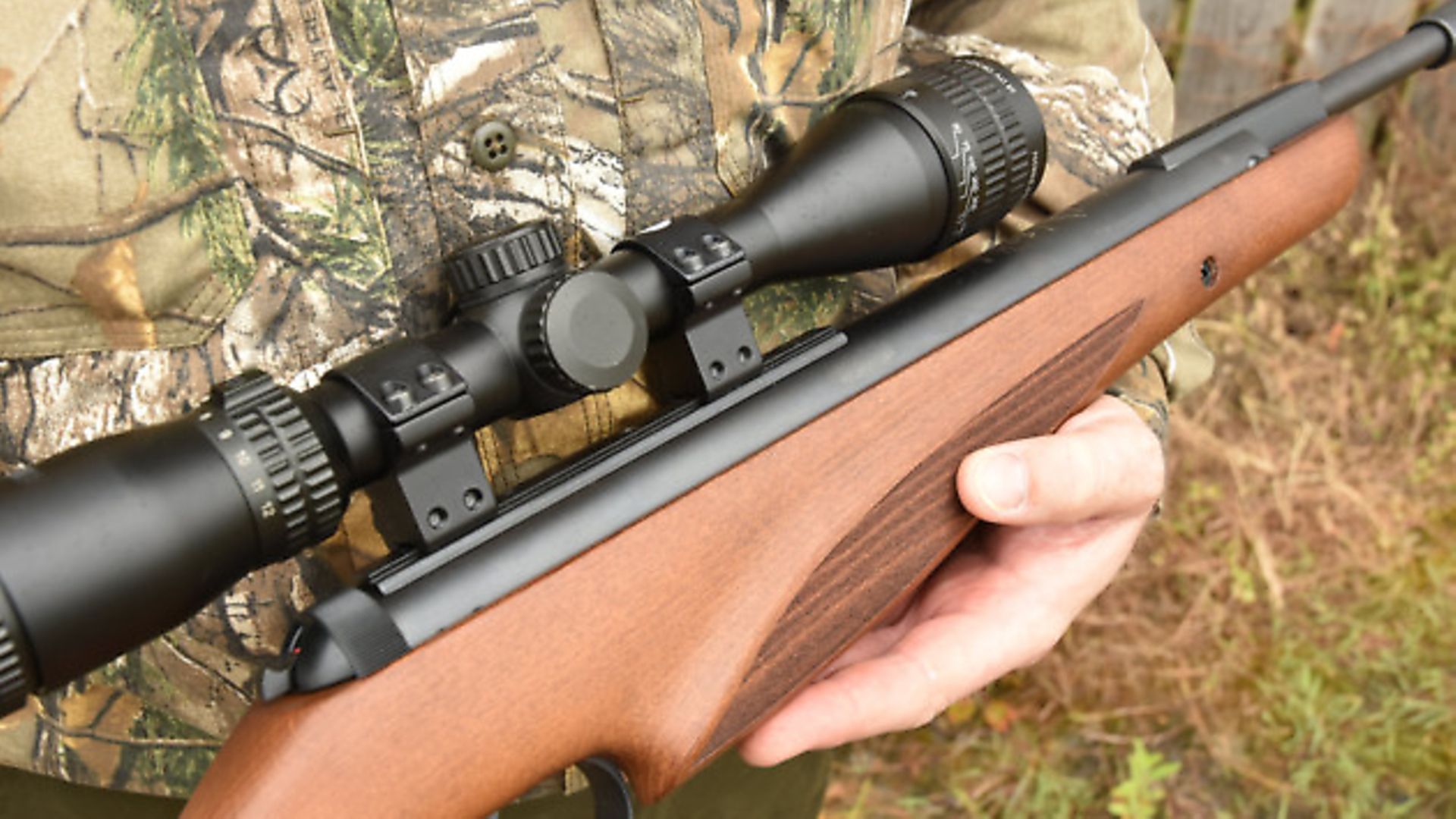 credit: Archant
credit: Archant
When I was a young man, there was a shortlist of airguns that we dreamed about; BSA and Webley from Great Britain, and for the more exotic and daring, the German rifles from Weihrauch, Feinwerkbau and Diana, or as they were known in the UK, ‘Original’.
I remember very well lusting after an Original 45, because my mentor, Albert had one. He was a local legend with a near mystical ability to find and shoot squirrels. He taught me so much I take for granted now, and I’ll always be grateful. He was the first person I knew who hunted with a .177, teaching me that accuracy, not power or pellet size, is what delivers clean kills.
Somewhere along the line, the German manufacturer of Original guns, Mayer & Gammelspacher GmbH, recovered their trade name lost after the war and, from then on, delivered their guns under the Diana brand name.
It’s not the most manly name for a gun, but as she is the goddess of hunting, it’s very appropriate.
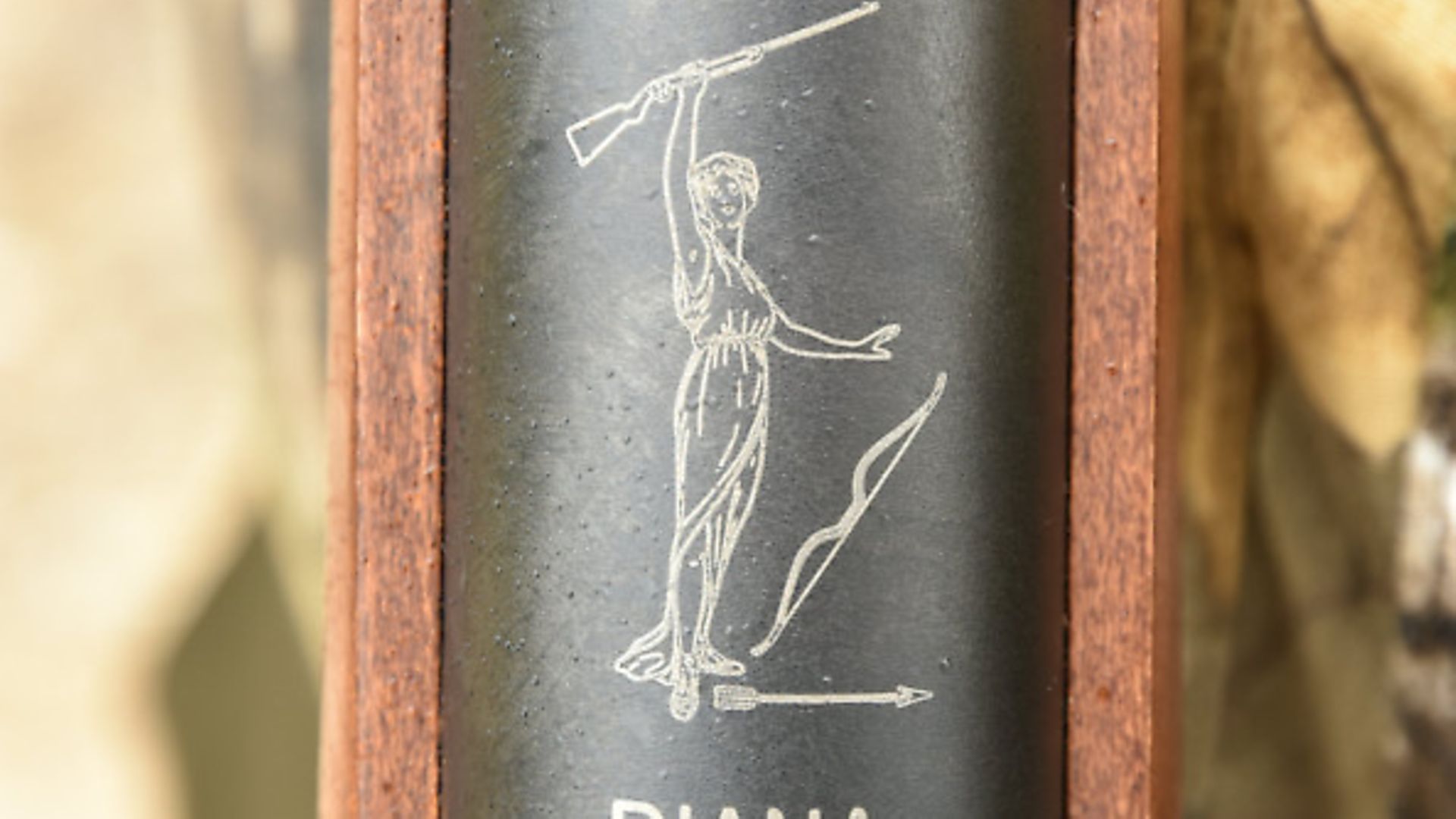 credit: Archant
credit: Archant
Over the last few years, finding a Diana rifle in your local shop seemed to be rather hit or miss, which I found sad. For me, Diana is one of the important brands and deserves to be widely available to give us the choice we deserve. In recent times, the company was bought by GSG (German Sport Guns), who have invested heavily in a new factory and engineering capacity. The 340 N-Tec on test is from this facility.
There’s even more good news. Import giants Edgar Brothers have become the UK distributor, and rifles are arriving in the shops now. Most gun shops around the country have an account with them, so I hope you’ll be able to see the Dianas first-hand very soon.
Prototype
I had the opportunity to shoot a pre-production version just over a year ago and I have to confess to being very impressed.
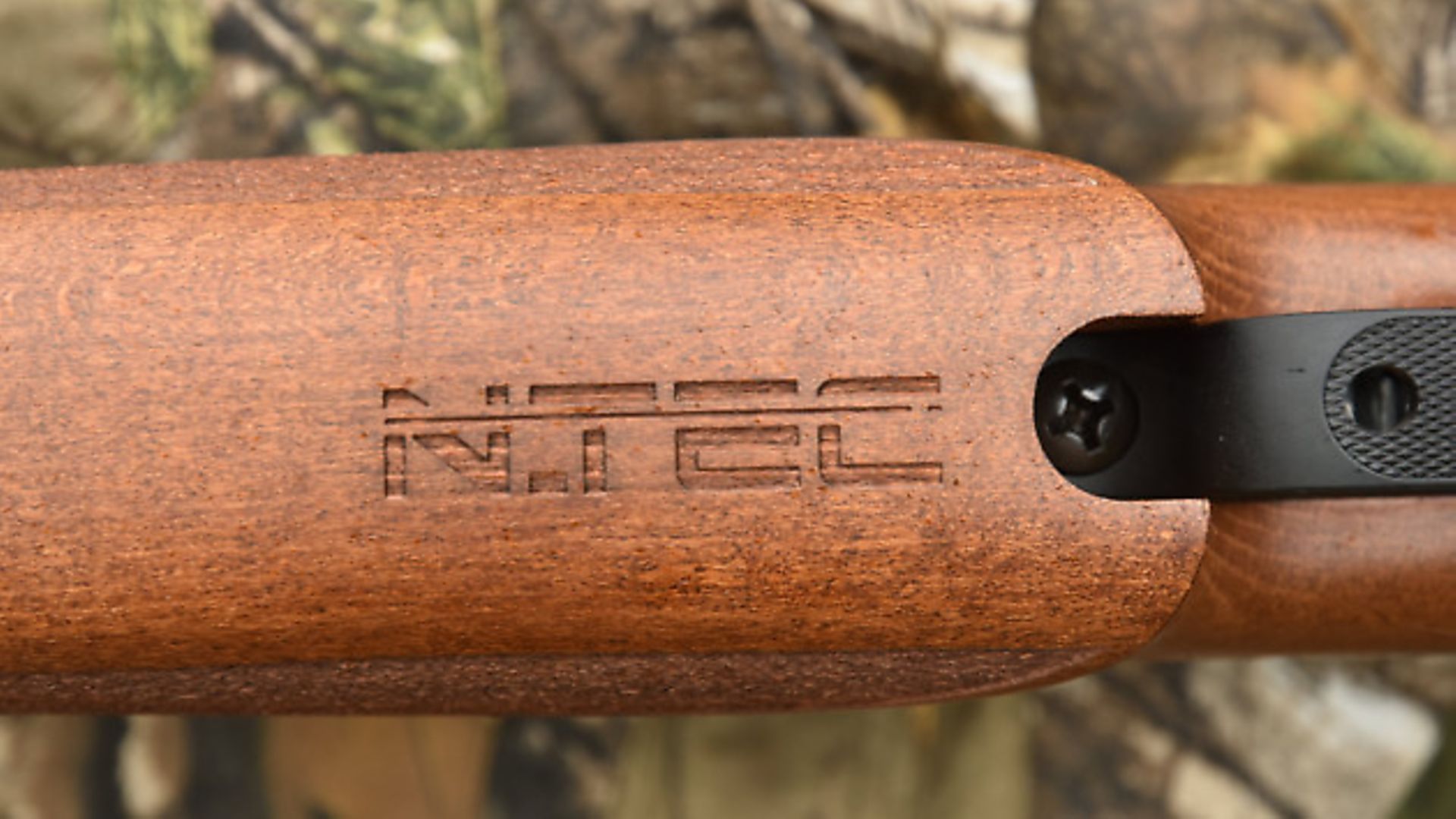 credit: Archant
credit: Archant
I don’t shoot recoiling guns so much these days, and yet I was quickly comfortable with the 340 N-TEC. First impressions of the production gun were also good, with its high standard of external finish and smooth handling.
In an effort to offer the kind of rifles we Brits like, Edgar Brothers worked with Diana to make changes, like shortened barrels. The test rifle has a 40cm (16”) barrel, which is very short by German standards. This gives the gun a handy carbine-like feel, and that is much more useful in the hunting field.
To maintain the balance, Diana fitted a cocking aid-cum-barrel weight because silencers aren’t allowed in Germany and this has no sound-deadening effect, but I found the gun inoffensive anyway. The stock is very pleasing, combining modern sporting handling with a nod to German tradition. It’s a proper sporter, not a competition wannabe, with smooth, sleek lines and a little bit of Bavarian flair shown in the ‘hog’s back’ cheek piece.
As with most modern rifles, it’s ambidextrous so there’s no palm swell, which is a shame. The comb could be a little higher for scope use, but this rifle is no worse than its competitors in this fault. The contact points have smart, stippled panels that add good grip and a modern look that I liked very much.
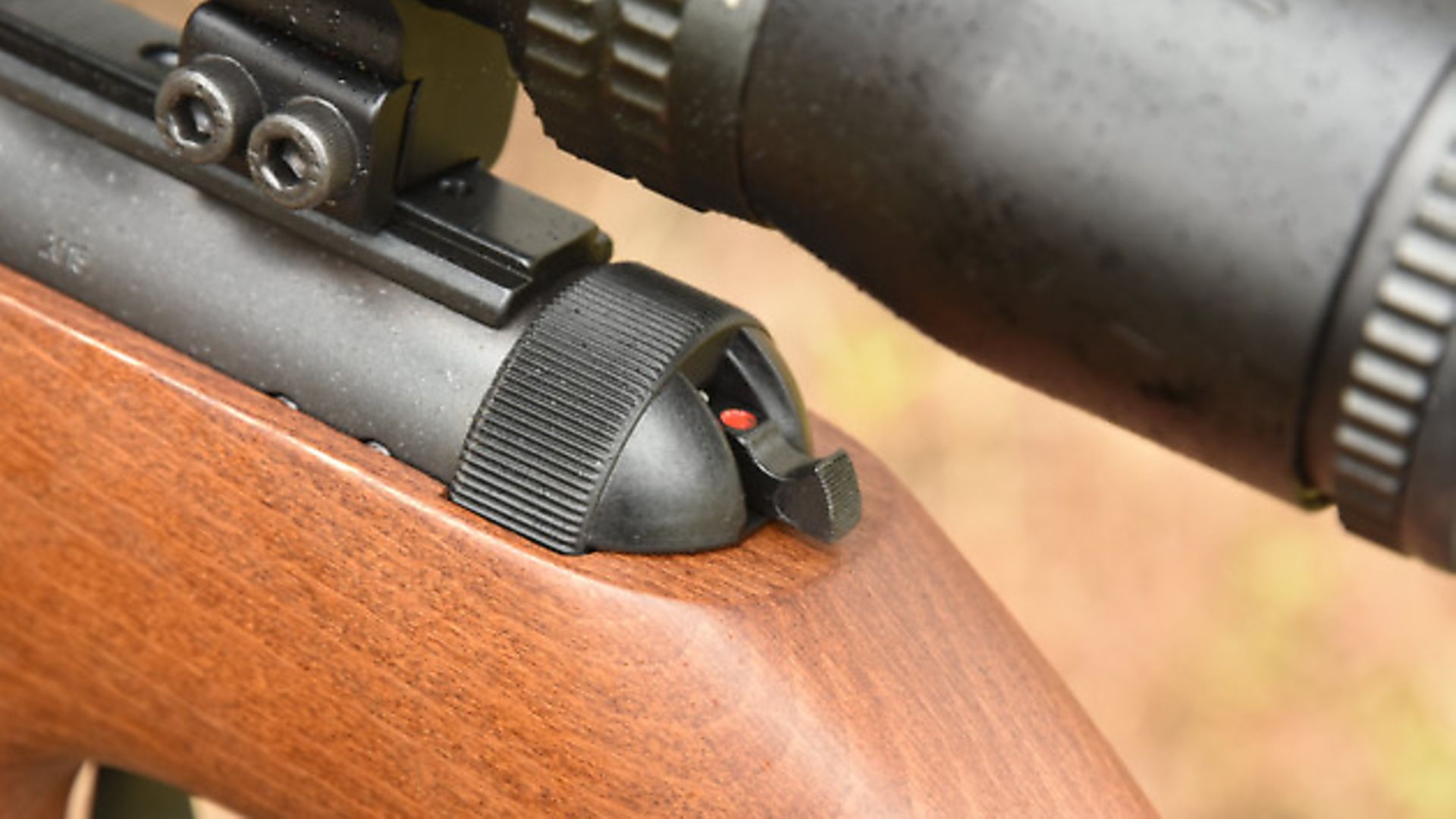 credit: Archant
credit: Archant
To complement the ambidextrous stock, the safety sits centrally at the rear of the action and pops out automatically as you cock the gun. It takes the form of a slim plastic tab that’s naturally placed to be thumbed off as you come on aim.
It’s manually resettable, something I value as a hunter. Many is the time I disengaged a safety only to see my quarry flee. Being able to reset the safety is a good real-world feature.
Speaking of cocking, it takes a fair amount of force with this gun for two reasons; firstly, the short barrel reduces leverage, and secondly, gas-rams have a higher starting pressure than a traditional coiled spring.
Gas-ram
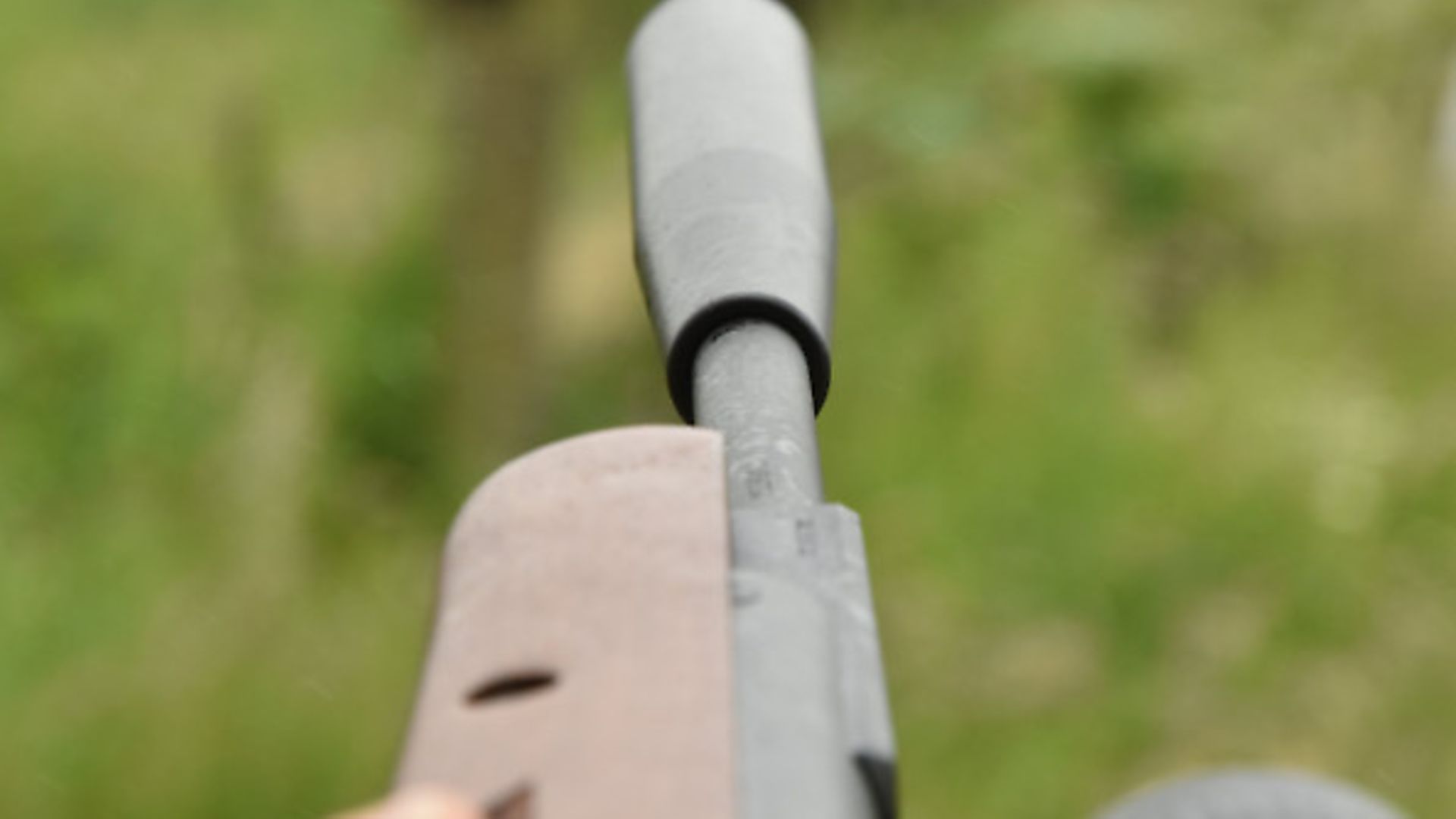 credit: Archant
credit: Archant
Diana has joined the stampede to offer gas-ram rifles, but I’m glad to say they didn’t take a quick and easy option. Instead, they sought an expert in the field and that took them to the doors of German suspension giants, Bilstein.
They’ve been making sealed gas systems for decades and there’s nothing they don’t know about sliding chambers, pressurised nitrogen, and seals. This, for me, is great thinking. Why reinvent the wheel when your neighbour is already selling them?
As promised, there’s no vibration or spring noise on firing, just a muted thud. Recoil is modest, but if there’s one thing I’ve learned from my colleague, Jim Tyler, it’s that our perception of one gun’s recoil beside the next is almost always flawed.
Only field shooting can tell us how the gun performs. All recoiling guns are hold-sensitive to some degree, and I felt the prototype was especially good in this respect.
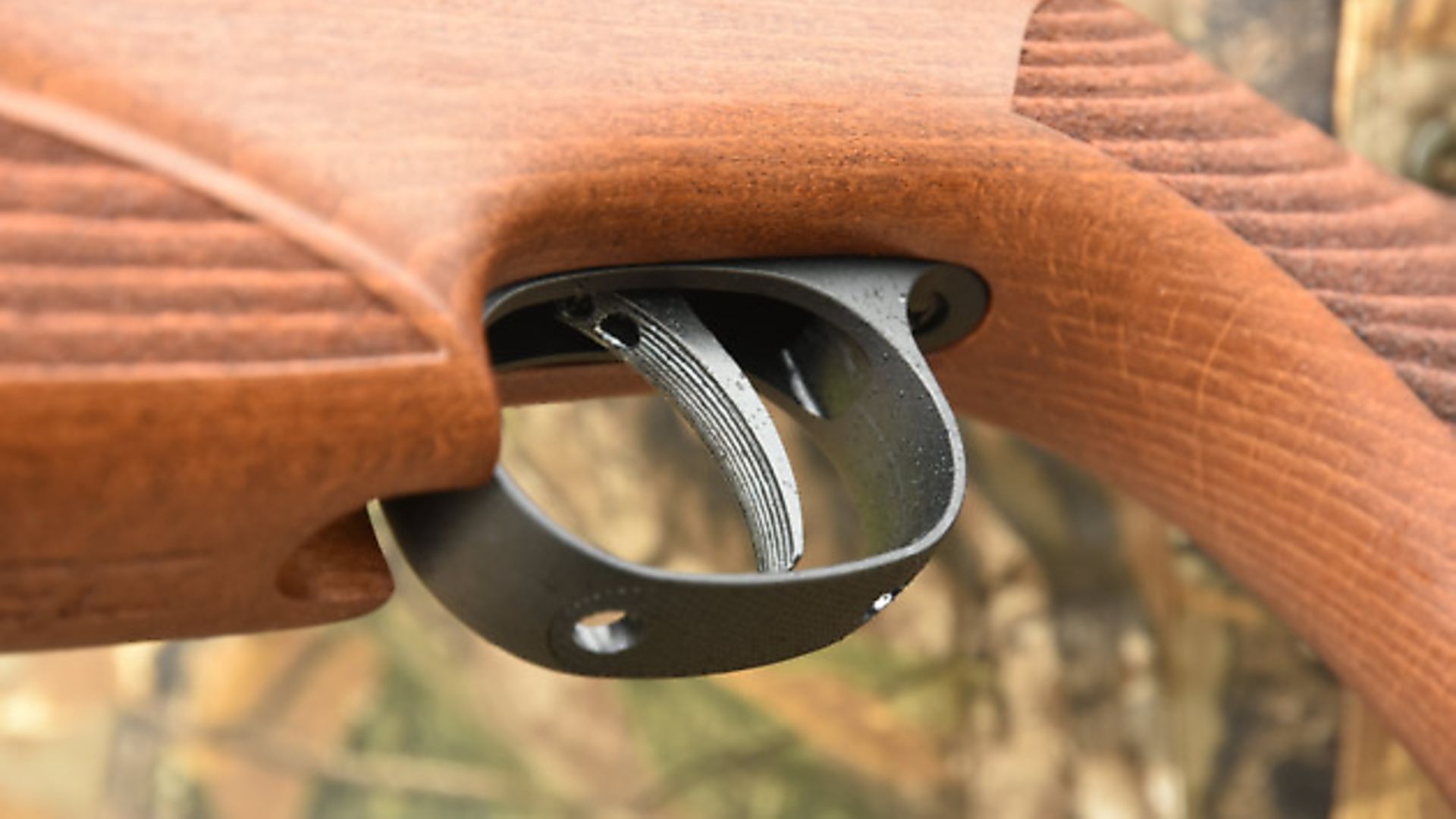 credit: Archant
credit: Archant
What I wanted to know next was how the short barrel, production version compared.
Hold sensitivity is difficult to explain, but essentially, a piston-powered rifle recoils before the pellet leaves the barrel. If you grip it tightly for one shot and leave it loose in your hands for the next, the barrel will be pointing in a different place as the pellet exits the muzzle, and accuracy is reduced.
The tightness of your grip interrupts the recoil shape. A rifle with only modest recoil is less affected, and therefore easier to shoot.
There were many claims gas-ram rifles were ‘quicker’, but again, I learned from Jim through scientific testing that this generally isn’t the case. They just feel snappy, and because there’s no residual spring vibration after the shot is released, the whole firing cycle feels shorter.
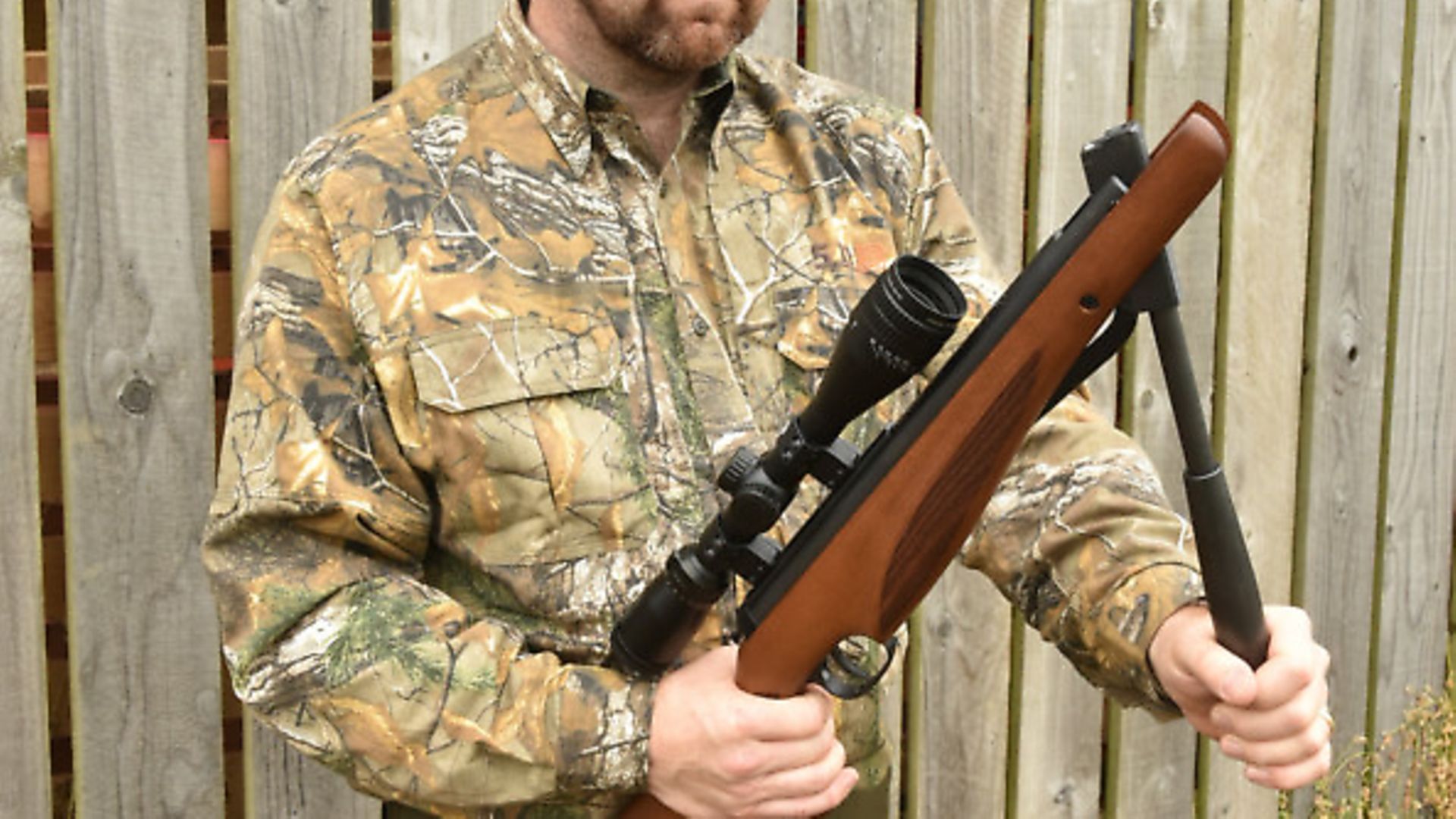 credit: Archant
credit: Archant
To get started, I fitted a neat Hawke Panorama 4-12 x 40 in two-piece Sportmatch mounts, employing the recoil arrestor stud into one of the pockets machined into the scope rail. Any recoiling rifle deserves this respect.
The quick recoil tries to move the mounts along the rail, which will cause a loss of accuracy, so I spend the minute it takes to avoid the problem.
Diana likes to use bolt-on scope rails rather than machine the top of the cylinder, which works for them. It also means the male dovetail is deep and offers a good solid grip for the mounts.
I was pleased to see that the rail is no taller than absolutely necessary, and I used medium-height mounts to keep the scope low over the action. This helps handling and allows the best contact between your cheek and the stock for consistent mounting.
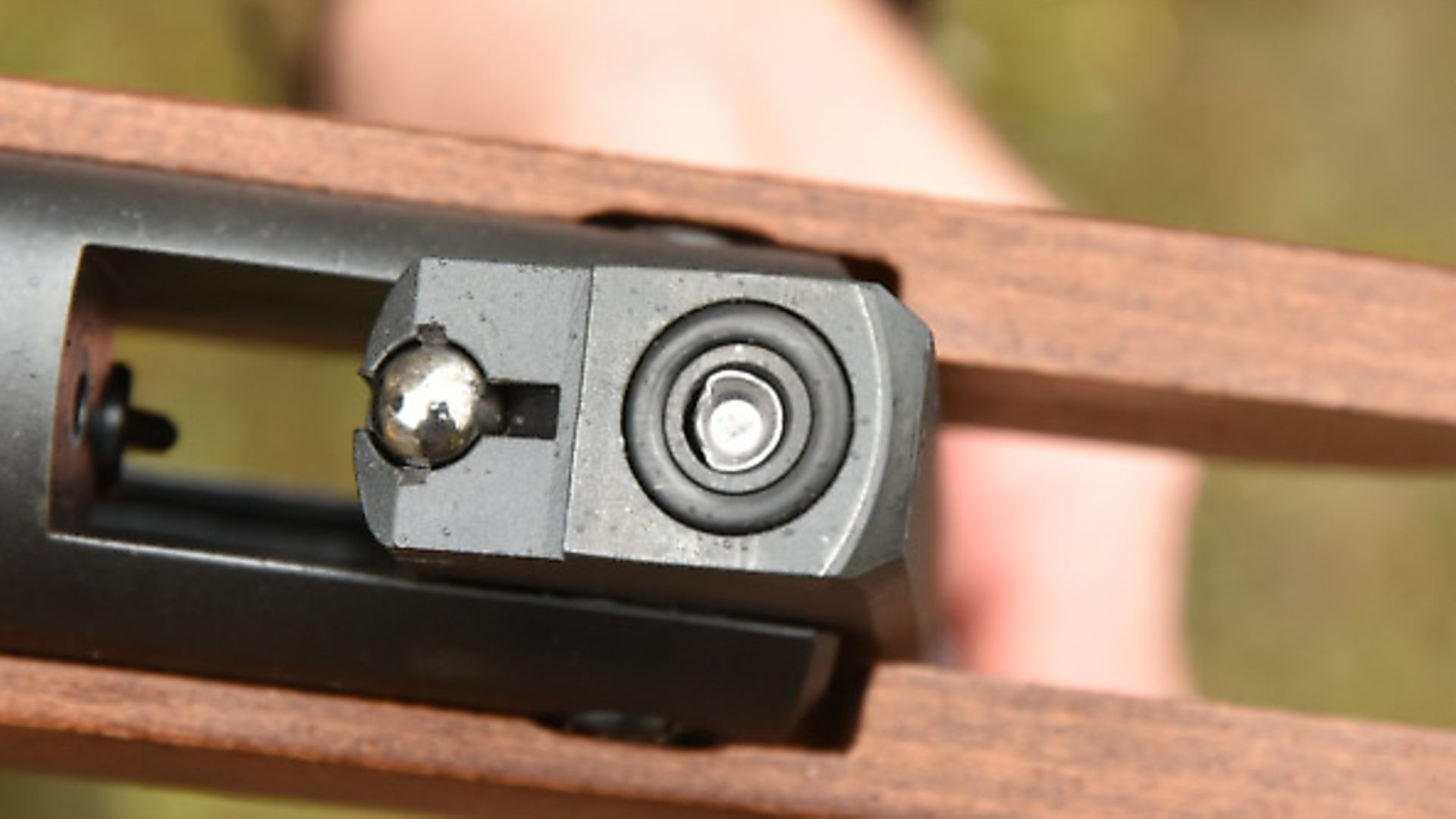 credit: Archant
credit: Archant
Next, I braced myself for the delights of a chronograph session. I roughly zeroed the rifle to let it run in a little, perhaps some 50 shots, and then trudged into my workshop to greet my faithful Skan chrono’.
This is a necessary but tedious part of being a gun tester, and I can feel your hearts breaking with sympathy at my plight … not.
A hundred shots later I learned the 15.9grain, .22 calibre Air Arms Field Diablo pellets were leaving the muzzle at an average of 551 fps for a muzzle energy of 10.72 ft.lbs. I’m confident this will increase as the rifle runs in, yet will leave us safely on the right side of the 12 ft.lbs. UK legal limit.
Consistency was impressive at just 6fps shot-to-shot, once the initial dieseling had passed.
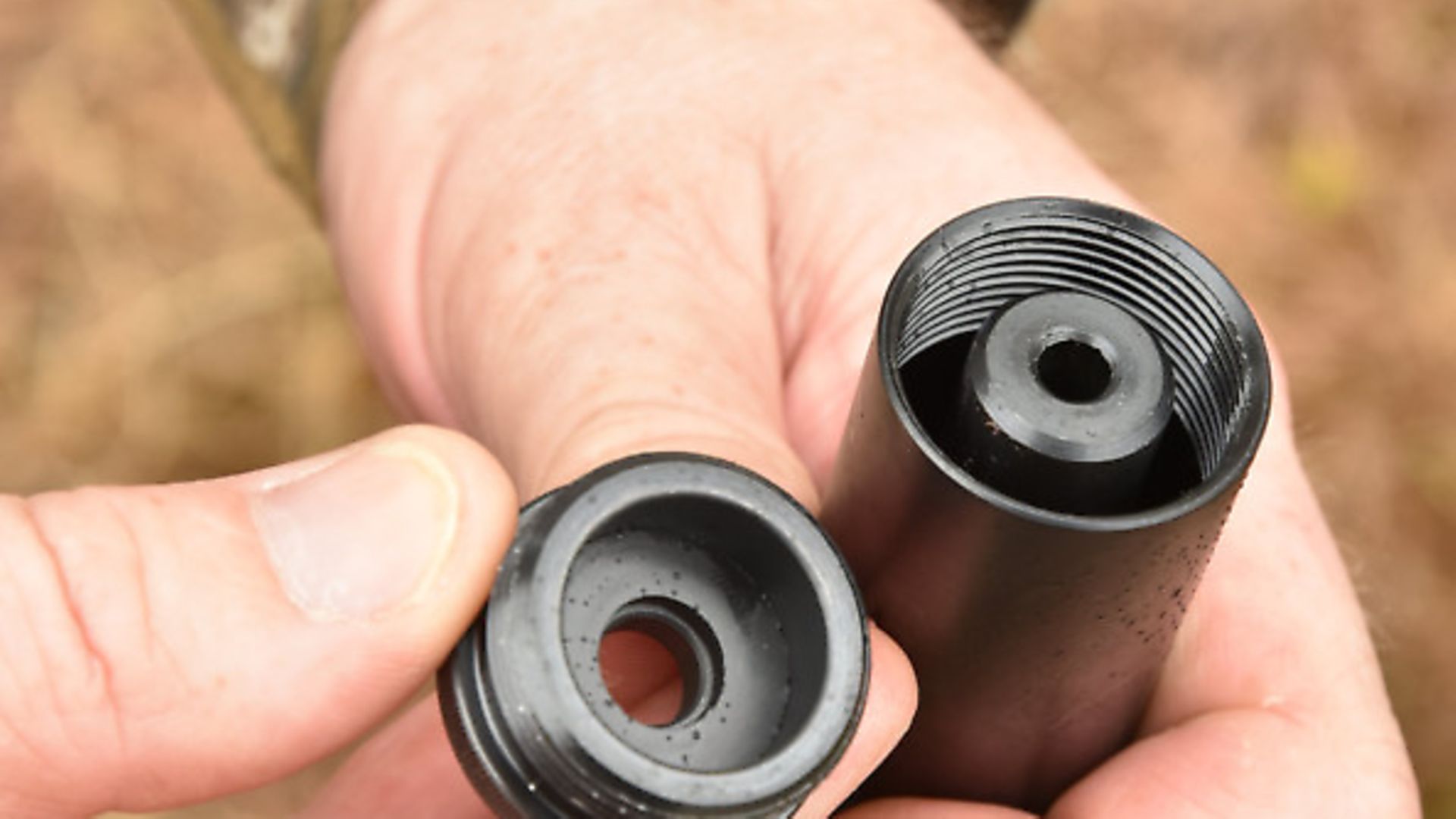 credit: Archant
credit: Archant
Group size
Accuracy testing was next and, for me, this is by far the most important part of any test.
I began shooting off a bench with conventional sandbag-type rests, but I wasn’t doing very well. I was using everything I’d learned about shooting springers, which involves a light grip that allows the rifle to recoil in a similar way each time the gun fires, but something still wasn’t right.
I was getting flyers that I couldn’t explain. Then I remembered the Guru telling me he shoots his beloved springers off soft cushions that absorb the recoil movement, rather than making the gun deflect off a hard surface.
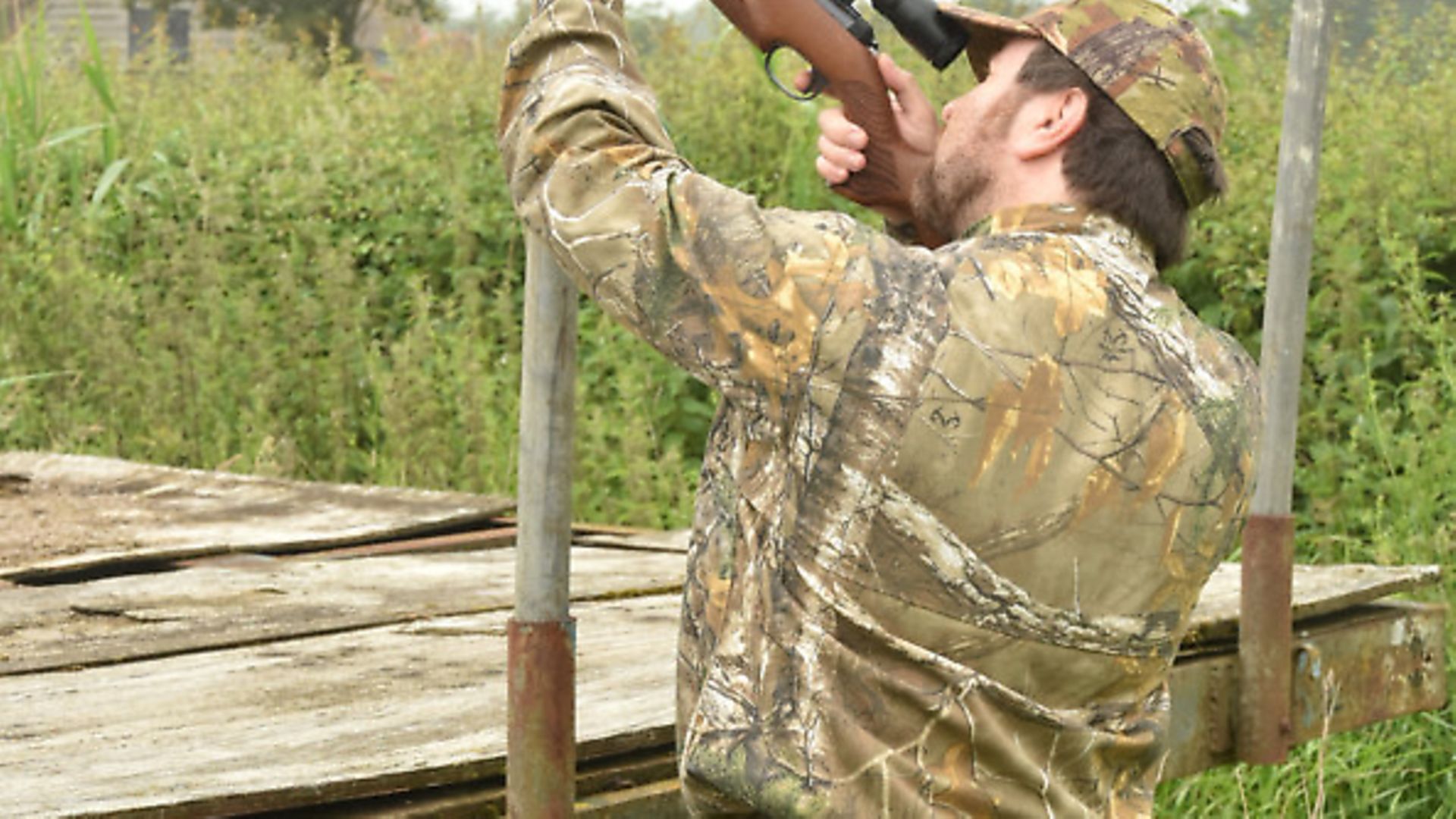 credit: Archant
credit: Archant
With a big, soft sofa cushion supporting the back of my leading hand, I was suddenly spot on; at 30 yards I was getting neat ½” groups consistently, and I was a happy man.
Piston-powered guns all have their quirks, and it’s clear the 340 N-TEC likes to be left free to do its own thing.
The trigger was excellent, with a light, smooth movement that broke cleanly. It’s fully adjustable for those who like to tinker. If it were my gun, I’d add a little weight to the second stage. I’m no fan of light triggers on hunting guns.
I noted the barrel and cylinder have an unusual finish, which looks a bit like aluminium, that’s been bead-blasted and then anodised, but these parts are steel, so it can’t be that.
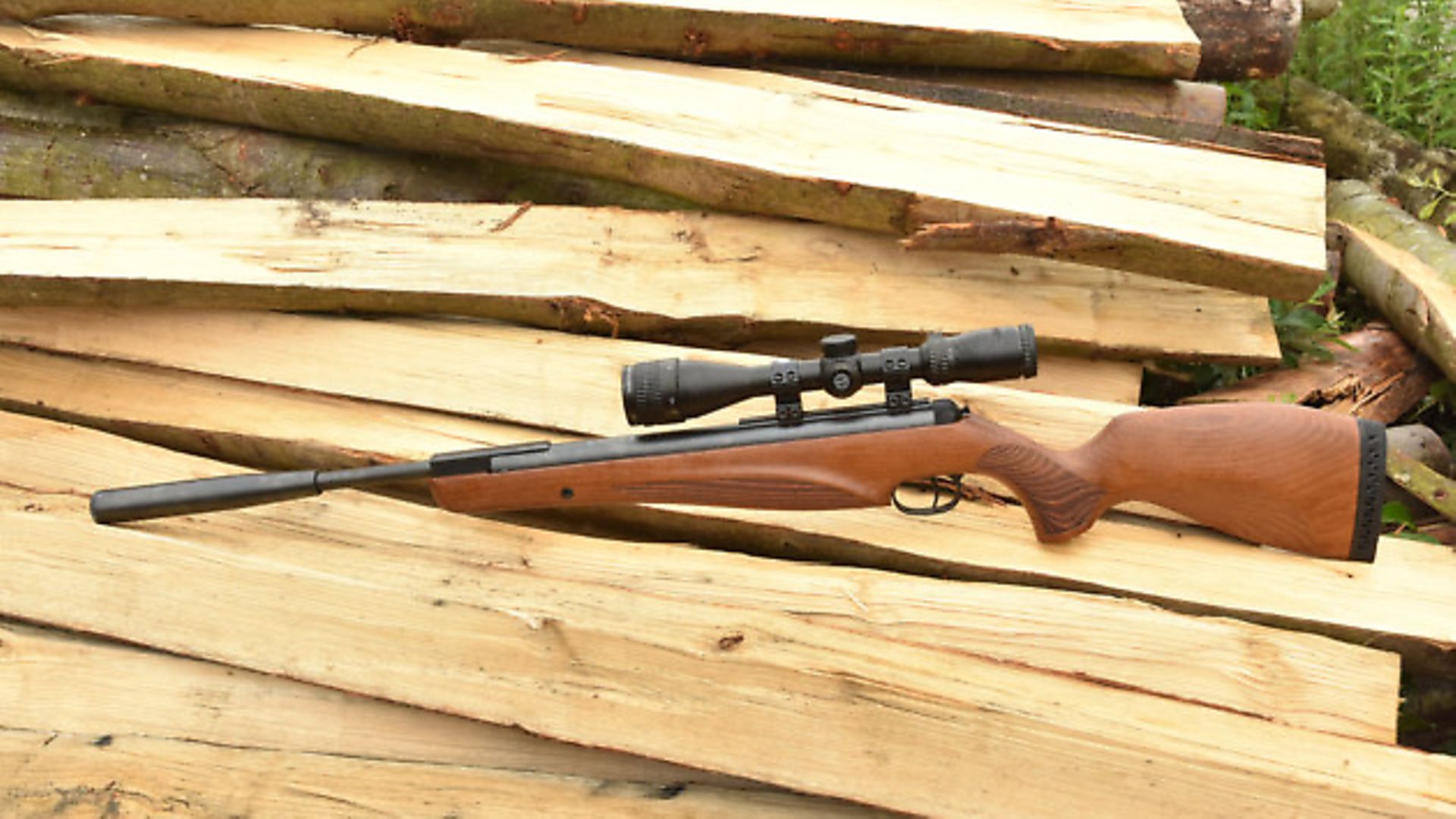 credit: Archant
credit: Archant
I ran out of vertical scope adjustment before I could get fully zeroed, so I recommend you choose droop-compensating mounts for this gun, and that will resolve the problem in a stroke.
For some reason, German airgun makers often build break-barrel rifles with their barrels angled slightly down from the cylinder, which is why mount manufacturers like SportsMatch offer products that address the issue. They’re easy to find and cost no more than a standard mount, so making this a non-issue.
It’s great to see Diana back in the shops and there’s no doubt this rifle shows they still make great guns.
It’s got all the power and accuracy you could want, and stands out from the crowd if you fancy owning something different to the guns that all your club mates shoot.
Ask your local gun shop if they’re going to be stocking them, because you might well want to have a look.
__________________
You may also like:
Review: Bushnell - 3-9x 40mm
The Big Test: Daystate Renegade
Airgun big test: Daystate Pulsar